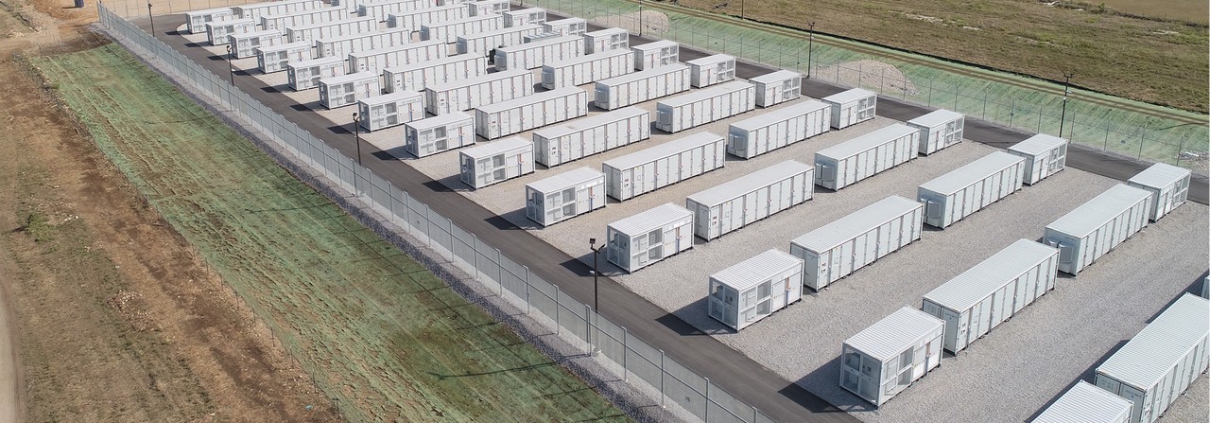Battery Storage Peak Shaving: Optimizing Energy Costs for C&I Facilities
Introduction: Why Peak Shaving Matters for C&I Users
Commercial and industrial (C&I) facilities face increasing electricity costs due to time-of-use (TOU) pricing and high demand charges. A battery energy storage system (BESS) designed for peak shaving can help businesses reduce peak electricity demand, smooth load profiles, and optimize energy costs.
In this article, we focus on grid-tied, peak shaving BESS, explain how it works, compare different types of C&I energy storage systems, and provide practical guidance for selecting the right solution.
How Peak Shaving Works
Peak shaving involves charging a battery during low-cost off-peak periods (valley hours) and discharging it during high-cost peak periods. By reducing peak electricity drawn from the grid, businesses can:
- Lower peak demand charges
- Flatten energy consumption curves
- Improve energy cost predictability
A typical grid-tied peak shaving BESS includes:
- Battery modules (lithium or lead-acid)
- Power conversion system (PCS) for AC/DC conversion
- Control system that schedules charging and discharging based on TOU pricing
This configuration does not rely on onsite generation, making it a pure grid-tied solution ideal for businesses with predictable load profiles.
Choosing the Right Battery for Peak Shaving
Battery Chemistry
| Chemistry | Advantages | Limitations |
| Lead-Acid | Lower upfront cost, proven technology | Shorter lifespan, heavier, higher maintenance |
| Lithium | Higher energy density, longer cycle life, fast charging | Higher upfront cost, requires intelligent management |
Lithium batteries are increasingly preferred for peak shaving due to their longer lifespan, smaller footprint, and lower O&M requirements, making them ideal for C&I facilities.
Sizing and Capacity
- Determine battery capacity based on typical peak load and desired shaving duration
- Match discharge power with peak load requirements to maximize cost savings
Investment and ROI
- Peak shaving BESS can significantly reduce electricity bills
- Total cost of ownership (TCO) may be lower for lithium systems due to longer lifespan and lower maintenance
Different Types of C&I Battery Energy Storage Systems
Understanding the variety of C&I BESS can help readers choose the solution that best fits their operational and financial goals.
| BESS Type | Power Source / Function | Typical Application | Key Advantages | Potential Limitations |
| Peak Shaving BESS | Grid-tied, charging during off-peak, discharging during peak | Commercial/industrial facilities, TOU optimization | Reduces peak demand charges, simple operation | Dependent on grid, cannot operate off-grid |
| PV + BESS | Solar panels + battery storage | Buildings or factories with rooftop PV | Increases self-consumption of solar energy | High upfront cost, solar-dependent |
| Generator + BESS | Diesel/natural gas engine + battery | Remote/off-grid sites | Ensures critical load supply | Fuel cost and emissions, not environmentally optimal |
| Hybrid C&I BESS | Grid + renewables + battery storage | Microgrid or multi-source energy systems | Flexible, combines peak shaving and backup | Complex design, higher cost |
| Frequency Regulation / Grid Services BESS | Grid | Participation in ancillary service markets | Potential revenue, fast response | Requires advanced control, not always practical |
Practical Takeaways:
- Peak Shaving BESS → ideal for businesses focused on cost reduction via TOU pricing
- PV + BESS → best when self-consumption of renewable energy is a priority
- Generator + BESS → ensures reliability for remote locations
- Hybrid BESS → flexible, integrates multiple goals
- Frequency Regulation BESS → additional revenue, requires advanced monitoring
If you’re interested in exploring solar battery energy storage systems, which combine renewable generation with energy storage to increase self-consumption and flexibility, you can read our detailed guide here:
Solar Battery Energy Storage Systems: What They Are, How They Work, and Why They Matter
This reference provides insights into system components, configurations, and practical benefits, helping readers understand another key BESS application beyond peak shaving.
System Design Considerations
Charging and Discharging Strategy
- Schedule based on TOU rates or demand charge signals
- Ensure battery capacity matches peak load duration
Battery Management System (BMS)
- Ensures safe operation by balancing voltage and temperature
- Optimizes battery performance and extends service life
- Maintains system consistency across modules
Safety and Reliability
- Overvoltage, overcurrent, and temperature protections
- Redundancy in critical applications
Scalability
- Modular design allows future capacity expansion
- Flexible configuration for different facility sizes
Benefits of Grid-Tied Peak Shaving BESS
- Reduced Electricity Costs – lower peak demand and overall energy bills
- Grid Relief – reduces stress on the local distribution network
- Lower Maintenance – especially with lithium batteries
- Energy Flexibility – can later integrate renewables or backup generation
Practical Scenarios
- Commercial buildings: charge at night, discharge during daytime peak hours
- Industrial factories: manage production peaks and avoid high demand charges
- Example: a 500 kWh lithium BESS in a factory can reduce monthly electricity costs by 10–15% under TOU pricing
Conclusion
Battery storage peak shaving is a cost-effective solution for C&I facilities looking to optimize electricity bills under TOU pricing. By understanding different types of BESS, system sizing, battery chemistry, and operational strategies, businesses can:
- Select a solution tailored to their load profile and location
- Maximize cost savings and operational efficiency
- Lay the groundwork for future integration of renewables or hybrid energy systems
A well-designed grid-tied peak shaving BESS offers long-term financial and operational benefits, making it a key investment for modern commercial and industrial energy management.


